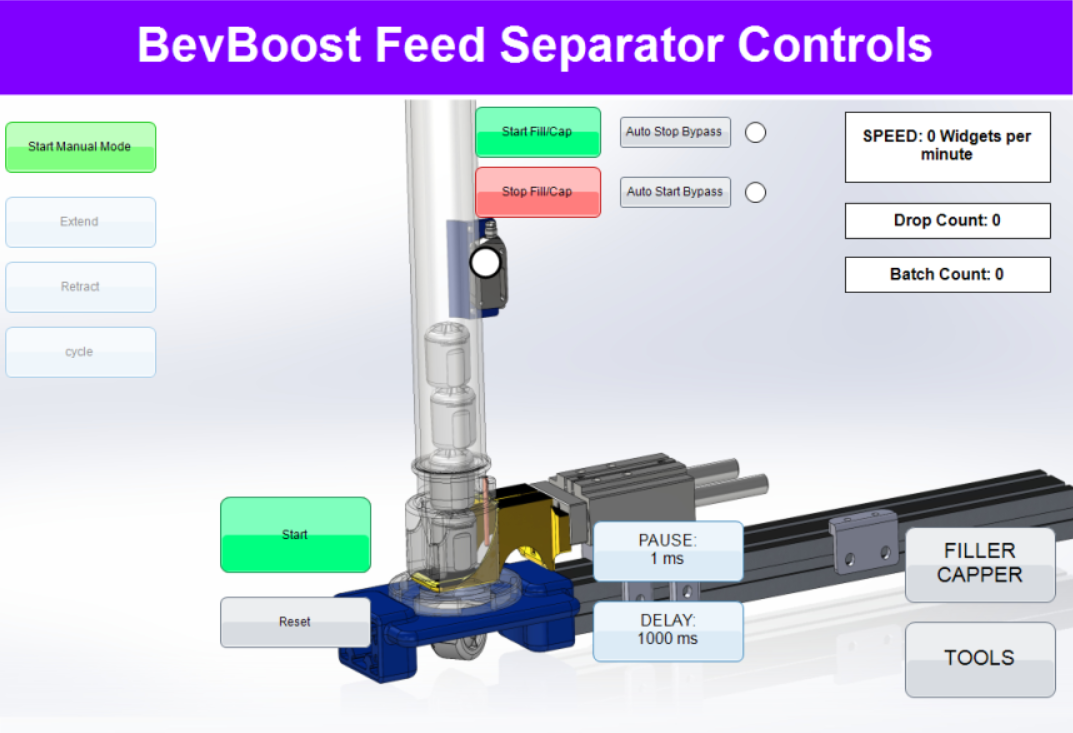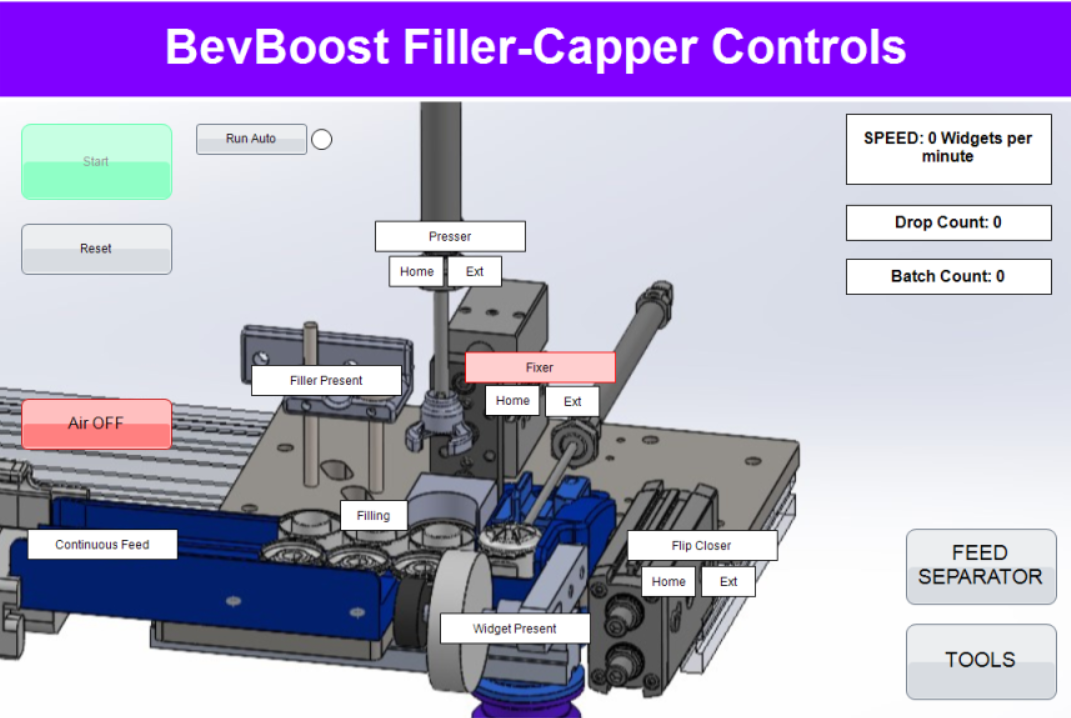BevBoost
At BevBoost, I worked in Structured Text (ST) to program PLCs (Programmable Logic Controllers). I automated the filling, capping, and distribution of Bevboost's widgets, which are packed in cans to infuse beverages with flavor.
By the end of my internship, I helped increase canning speed from 30 to 120 cans per minute. This was achieved through optimizations in error handling, custom timing, and hardware improvements.
Star Wheel
The star wheel was the first distribution method I worked on. It's a simple rotating wheel with slots that hold widgets. When
a can under the star wheel, the wheel indexes and a widget falls into the can. The wheel got jammed often and the driving motor
was limited in how fast it could index.
I programmed in redundancy to reduce false errors and the ability to change speed settings, which increased speeds from 30 to 60 cans per minute.
Feed Separator
I suggested and implemented a feed separator to replace the star wheel. The feed separator uses a single axis pneumatic piston to
extend and retract a specially shaped arm that drops a widget when it's extended, and holds back the next widget when it's retracted.
The pneumatic system was less prone to jamming and its near instantaneous movement allowed for a speed bump to 120 cans per minute.
Filler / Capper
The filler / capper fills widgets with flavor, closes them, and moves them to whichever distribution method is being used.
The original was designed by a contracted third party, giving proprietary, hidden code and a separate PLC. This caused a lack of integration
with the rest of the system and no customizability in timing.
I reverse engineered the original filler's code and rewrote it to run on the same PLC as the rest of the system. This allowed for communication
between the filler and distributor, which enabled features like pausing the filler when the distributor was full.
I also wrote in features that allowed for timing tweaks, to optimize the machine for different canning lines.
The new filler / capper has a speed of 130 widgets per minute, up from the original 48.
User Interface
In addition to the actual automation, I designed and implemented user interfaces for the PLCs that made controlling the machines easy and intuitive. I installed a WiFi router in the PLC, which allowed for remote access via a tablet so that operators could control the machines from anywhere in the facility.

